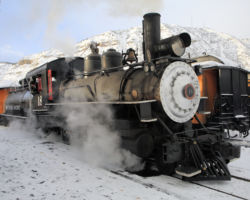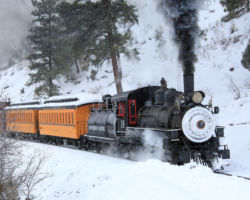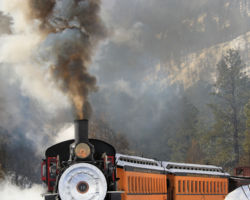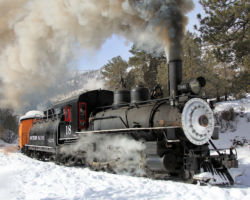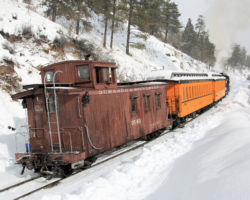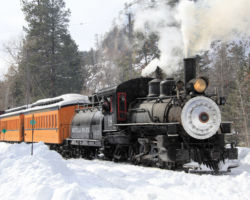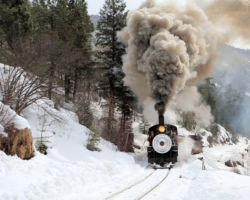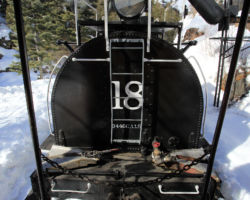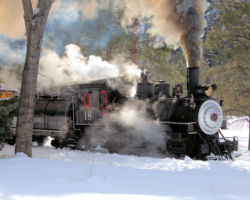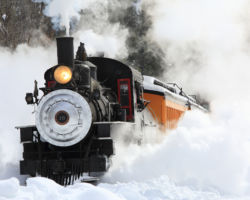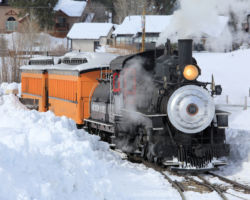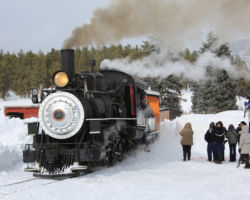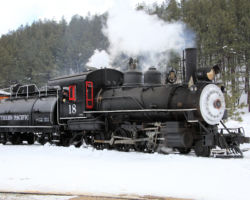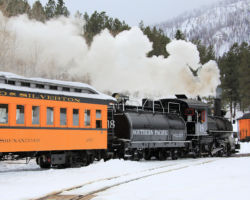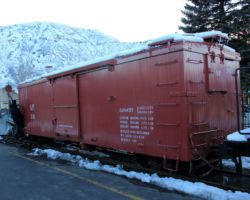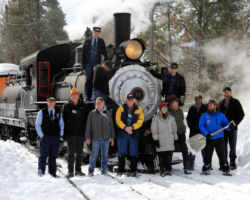A Brief History of Southern Pacific #18
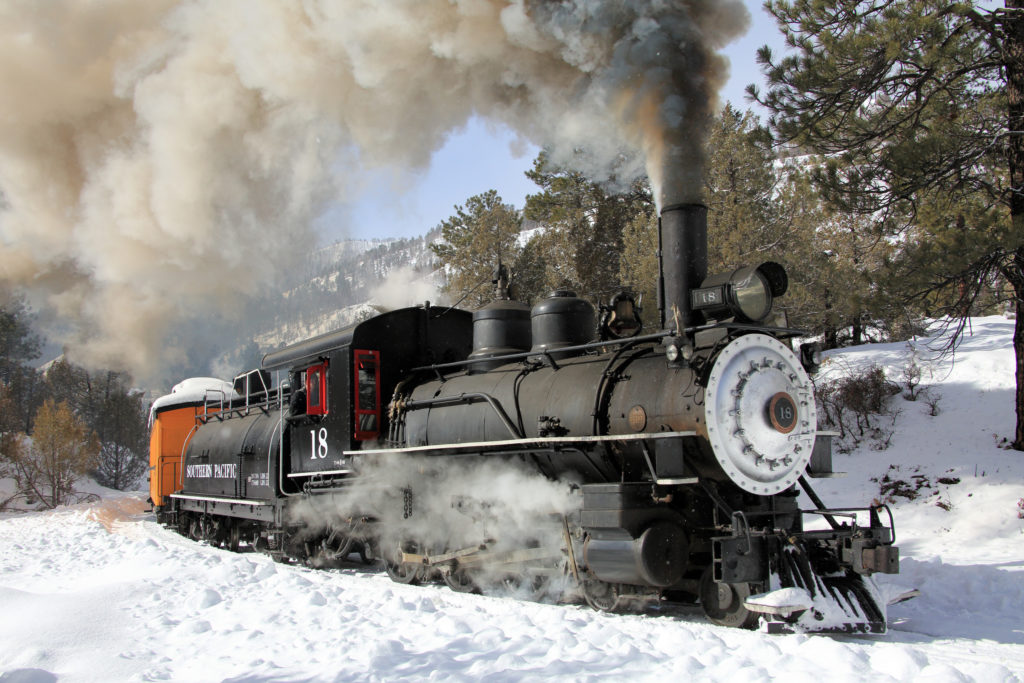
Southern Pacific 18 is a 3-ft gauge 4-6-0 originally built by Baldwin in 1911 for the Nevada-California-Oregon Railway as their #12. The N-C-O was acquired by Southern Pacific in 1928, and the line was quickly standard gauged as part of creating what would become SP’s Modoc Route. With no further use for N-C-O #12 on home rails, the railroad renumbered it to SP 18 and moved it to one of their other narrow gauge properties – the former Carson & Colorado.
The Carson & Colorado started off in 1880 as an independent 3ft narrow gauge line to tap the mining prospects of western Nevada and eastern California. The railroad built some 300 miles of track south from Mound House, NV, where it connected with the standard gauge Virginia & Truckee, through Mina, Montgomery Pass, and then down the high desert of California’s Owens Valley to Keeler, a point in the far side of nowhere on the eastern shores of Owens Lake.
Southern Pacific bought the line in 1900, and over the years the north end was realigned and standard gauged. The narrow gauge on the south end gradually receded from the north. SP applied to abandon Tonopah Junction to Benton in 1936, then Benton to Laws in 1942. Rails from both sections were removed in 1943, requisitioned as part of the war effort. The final segment of narrow gauge, located between Laws and Keeler and interchanging with SP’s standard gauge Jawbone Line at Owenyo, lasted long enough to be dieselized in 1954. The diesel – a special GE 50-tonner set up for narrow gauge – prolonged the inevitable for another six years, but the final train ran on April 29, 1960.
In 1954, with the new diesel on the property and the three remaining steam engines officially retired, some preservation-minded individuals in Independence asked SP to donate the engine in memory of the area’s railroad heritage, and SP obliged. 18 was donated to Inyo County and moved to Independence for display in Dehy Park in June of 1955.
(The other operating steam locomotives that survived until the end of the SP ex-C&C narrow gauge – #8 and #9 – were also preserved. SP 8 is now on display in Sparks, NV, under the care of the Nevada State Railroad Museum. SP 9 is preserved at the Laws Railroad Museum, where it and other preserved equipment occupy part of the former narrow gauge yard.)
The first real restoration efforts for SP 18 started back in the mid-1990s by a volunteer organization known as the Carson & Colorado Railway. Significant progress was made, but the effort really got underway in 2009 with a formal operating restoration proposal was submitted to the Inyo County Board of Directors. The proposal was approved and restoration took place over the next seven years.
In October of 2016, the engine was steamed up and moved under its own power for the first time since 1954. A year later, it was temporarily trucked down to Laws, where it could operate over a few hundred yards of its home rails. The problem with a fully restored steam engine in the Inyo is that it’s just a long way from anywhere it could really stretch its legs.
SP 18 Comes to Durango
After the 416 Fire struck the Durango area in June-July 2018, the Durango & Silverton began seriously planning conversion from coal to oil as a steam locomotive fuel source. Oil-burners have traditionally been used in places with high fire danger, as they don’t eject burning cinders or embers that can linger and eventually catch try vegetation on fire. D&RGW K-37 #493 was selected for the first conversion, but since it needed a full overhaul at the same time, it would take a while before it was ready.
Since Randy Babcock, Chief Mechanical Officer of the D&S, was instrumental in bringing 18 back to life, it wasn’t too much of a surprise when the announcement came in October 2018 that the D&S would be leasing the engine. The idea was that 18 would serve to train and familiarize crews with the nuances of oil firing instead of coal while 493 was being rebuilt. It was a win for pretty much everybody – SP 18 would finally get to stretch its legs on miles of track, the D&S crews would be ready for oil firing when 493 was ready, the railroad would have an engine that could operate through tinderbox conditions that wasn’t a diesel, and the railfan community would have something completely new and different to photograph.
The D&S’s annual winter photography weekend was expanded to add SP 18. These would be some of its first public trips. Saturday, Feb 16, 2019 would be all SP 18, Sunday would be 476 and a mixed, and then a special trip added Monday would be a combination of RGS 5 and SP 18. Unfortunately by the time the Monday trip was announced, I already had professional commitments in Memphis that I couldn’t reschedule. But I did move my flight out to late Sunday night and managed to swing down for the Saturday run.
The engine suffered a piston failure on a regular train in April and was subsequently sidelined until repairs could be made. The talented D&S roundhouse crew had the damage repaired and returned 18 to service by July, but that eliminated any possibility of a charter before the summer tourist season hit and the line got busy. Pete Lerro tried to pull together a later photo charter in August, but couldn’t find enough participants. I was all on board for that – it’s a shame there wasn’t enough support. SP 18 continued to run into the early fall, and then was returned to the Eastern California Museum in Independence in October of 2019. That left the February trips as the only real photo charter runs with the engine. I’m glad didn’t pass that one up, even if they heavy snow we got in 2019 made photo angles more than a little challenging.
Photos from Saturday, Feb 16, 2019
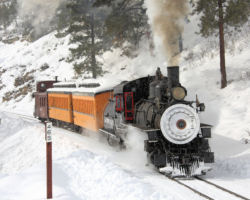
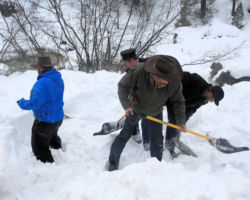
This work is copyright 2024 by Nathan D. Holmes, but all text and images are licensed and reusable under a Creative Commons Attribution-NonCommercial-ShareAlike license. Basically you’re welcome to use any of this as long as it’s not for commercial purposes, you credit me as the source, and you share any derivative works under the same license. I’d encourage others to consider similar licenses for their works.
